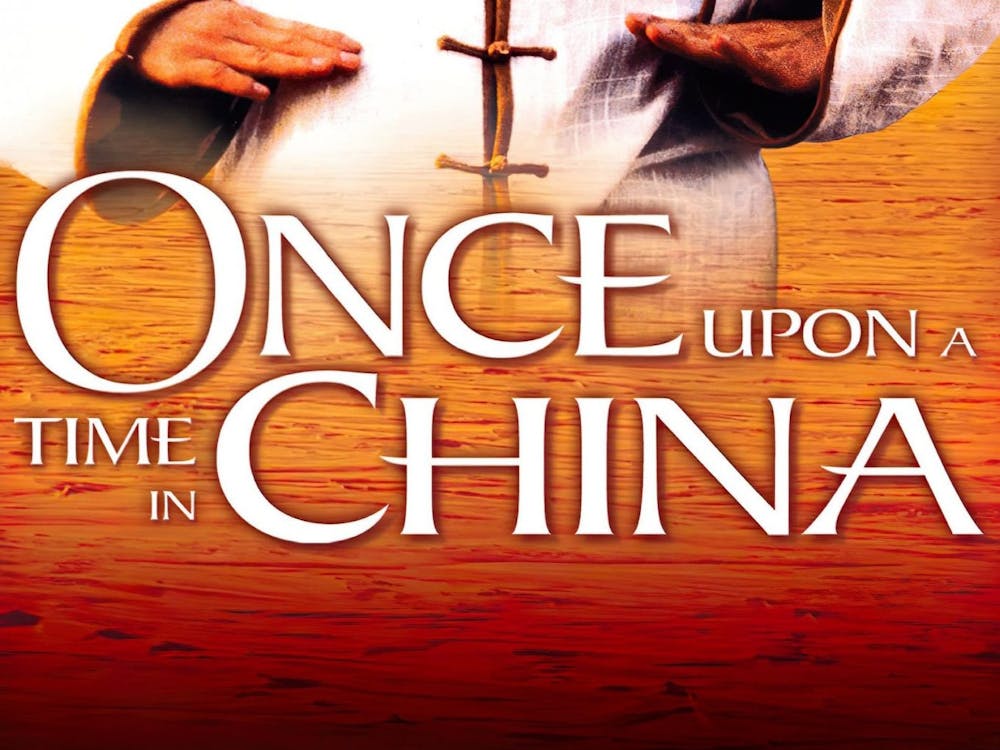On Jan. 23, Screen/Society showed Tsui Hark’s 1991 film, “Once Upon A Time in China,” at the Rubenstein Arts Center film theater. This film is widely lauded as “One of the pinnacles of Hong Kong cinema’s 1990s golden age,” and propelled Jet Li, who plays the protagonist Wong Fei-hung, to international superstardom. “Once Upon A Time in China” is the first of five films and a TV show within the franchise of the same name. This film was shown as part of a Hong Kong double feature by Screen/Society first, with “Twilight of the Warriors: Walled In” shown on Jan. 24.
The theater was nearly full, packed with Screen/Society regular attendees, interested Duke undergraduates and students seeking extra credit in their Duke Chinese courses, including at least half a dozen students from Intermediate Chinese for Bilingual Learners (CHINESE 232). The film was introduced by Dr. Eileen Cheng-yin Chow, Associate Professor of the Practice of Asian and Middle Eastern Studies. She identified the film as part of “the peak of Hong Kong cinema” and gave essential background information on its setting of late 19th century Qing-era China. With Chow’s framework, the audience went into an otherwise potentially tedious or confusing film with the ability to understand its deeper messages about the relationship between China, history and film.
The film follows Wong Fei-hung (Jet Li), a real Cantonese martial arts master and folk hero who lived from 1847 to 1925. He practiced and taught both martial arts and medicine and, according to Professor Eileen Cheng-yin Chow, was like a “real-life James Bond.” He has been portrayed on film by a number of famous actors, including Jet Li and Jackie Chan. At the time of its release, the film was the subject of some controversy as Li was not a Cantonese speaker nor from Hong Kong. Since Li cannot speak Cantonese, his entire performance was dubbed, one of several instances in his Hong Kong filmography.
In “Once Upon A Time in China,” Wong Fei-hung defends China, as well as his clinic, from the French, American and British forces who have entered the country to trade, spread Christianity or otherwise gain influence and power. At the same time, he navigates his own reciprocated romantic feelings for 13th Aunt (Rosamund Kwan), a woman who lives with him, and who, though not related by blood, is considered his senior under Chinese tradition. The film is punctuated by epic action sequences, featuring dozens of fighters and showcasing immense effort from the cast and crew.
The 134-minute-long film leverages exaggeration and emphasis to deliver its points. Extreme low and high angle shots during the film bring the viewer’s attention to the larger-than-life nature of Fei-hung and his followers, reminding the audience that these real individuals now hold the status of legends in Chinese history. The often-caricatured Western characters, including officers and clergymen, featured in the film received scattered chuckles from the audience, who otherwise remained silently engrossed in the film’s epic action sequences. These were beautifully choreographed and filmed, and they were stunning to view on the big screen. Speaking of the screen, perhaps the only grievance of watching the movie in the Ruby’s film theater was the size of the screen: Hark’s masterpiece would have benefited from an even larger, more expansive canvas to underscore the film’s hugely influential martial arts combat scenes.
The film has something for everyone; huge action sequences, detailed historical backgrounds and even a romantic subplot. “Once Upon A Time in China” succeeds as a riveting, still-relevant depiction of Chinese culture and history, one which leads the viewer to question the process and cost of cultural globalization. Overall, 34 years after its original release, the film still brings together all generations and backgrounds of film viewers.
Get The Chronicle straight to your inbox
Sign up for our weekly newsletter. Cancel at any time.
Sonya Lasser is a Trinity first-year and a staff writer for Recess.

